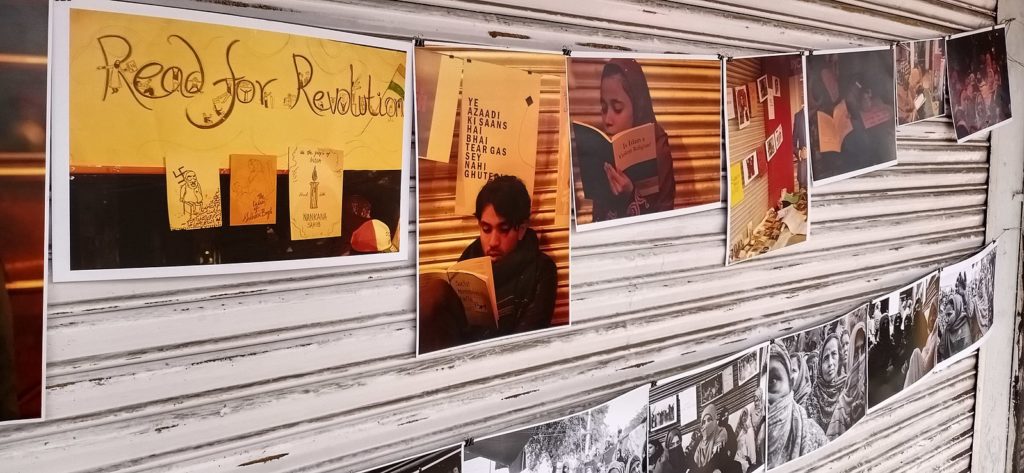For centuries, India has been plagued by social stratification mediated via caste, class, colorism, and religion. The resulting inequality causes political groups to periodically erupt in protest. In this time of COVID-19, countries including India imposed lockdowns to enforce social distancing. Access to basic resources like food, water, medical services, and a steady source of income became increasingly uncertain. Daily wage workers in India were stranded in cities far from home, as public transport systems were shut down, a situation compounded by a lack of medical supplies.
In the midst of these tensions, communal uproars, bigotry and religious discrimination have flared across the country. National and local media played a blame game in which Islamophobia, fake news and political propaganda diverted Indians from matters that need public attention. As quarantine is becoming monotonous, routines seem distant, which gives way to anger and impatience. What will people turn to next? Will their impatience culminate in more revolts and marches?

One response to the crisis lies in art, which can provide hope and comfort during bleak times. Comics and cartoons are accessible forms of communication, and can share a universal language across cultures. Digital media platforms have allowed for the massive diffusion of political cartoons and other art. The Indian webscape is diverse, and as we will see in this article, artists explore issues from sexuality, gender and caste to religion and body image through graphics, music, poetry, and satirical cartoons.
Collectives like Brainded India, an independent offshoot of Brainded International, form artist networks who have created a social movement that encourages dissent, freedom and the exploration of social and political issues in society. Artists like George Mathen, who is also known as Appupen, painted a rather alarming series of images of the plight of migrants during these trying times, showcasing horrifying situations through stark graphics.
The blog Green Humour uses satirical illustrations to showcase ecological issues in contemporary India. Its pieces have been republished by organizations ranging from the World Wide Fund for Nature to National Geographic Traveller India.
In his work, artist Rohan Chakravarty sheds light on how the mainstream Indian media refuses to acknowledge issues such as the politicization of ecological resources. In one cartoon, he satirizes a proposed coal-mining project across the Dehing Patkai Wildlife Sanctuary in Assam that was approved by the government in early 2020. The hashtag #SaveDehingPatkai began trending. Due to mass protests, this project has been halted, at least for now.
The Nib is an online publication that puts out cartoons, news, essays, memoirs and satires about politics from all over the world. It began in 2013 in the United States and achieved a global following. It is especially important to have communities like this that bring forth critical discussions about democracy, governance, and politics in India, because of its diverse culture and large population.
The Kanda is an Indian version of the satirical American news site, The Onion (kanda means ‘onion’ in Hindi). It was started in 2018 by Mehershad Wadia, a molecular-biology student from Mumbai. One recent article lampoons Prime Minister Modi’s request to bang pots at 9 PM on 22 March 2020 for 9 minutes to thank healthcare workers for their efforts during the pandemic. While there is nothing wrong with showing such appreciation and solidarity in a time of crisis, this call to action took place as the government failed to supply protective gear, testing centres, and safe working conditions for workers.
Nandita Das, a renowned Indian actress, used her fame and privilege to create a seven-minute video, ‘Listen to Her,’ which was supported by UNESCO and UN Women. The film portrays a young woman calling on a mobile about being physically abused as Das listens to her story. The message we are given is that we must speak up about such atrocities.
Not all of these artistic expressions are about crisis. Minu Bakshi, a well-loved Hindustani classical singer, has taken up shayari (poetry) during the pandemic. She shares videos of herself on Instagram reciting complex, emotional poetry in Hindi and Urdu and calls for people’s responses to her work through art, especially with dance and music. She shares these videos online to show how multi-dimensional and powerful art can be, especially at times of crisis.
In a pluralistic country like India, pleasing everyone is impossible: every social movement ‘impedes’ someone else’s beliefs and identities. However, protest art is inclusive and can be effective in bringing forward the voice of minorities, demonstrating injustices created by social structures, and combatting institutional suppression.
The pandemic has shown how poorly equipped India is to handle a health emergency. It also shows how parties in power take advantage of suffering and turn humanitarian aid into propaganda, with the media at their mercy. This is why protest art is gaining more importance in modern-day India and will continue to do so, until systemic changes happen for all.
This article is the eighth produced in collaboration between Toward Freedom and the Symbiosis School for Liberal Arts in Pune, Maharashtra, India. For more information, contact Barry Rodrigue <[email protected]> at Symbiosis International University.
Author Bio:
Ankita Mathur is from Mumbai. She is a fourth- year student at the Symbiosis School for Liberal Arts, where she is pursuing a major in Media Studies. She is passionate about the evolving impact of digital media, culture, and art on society.
